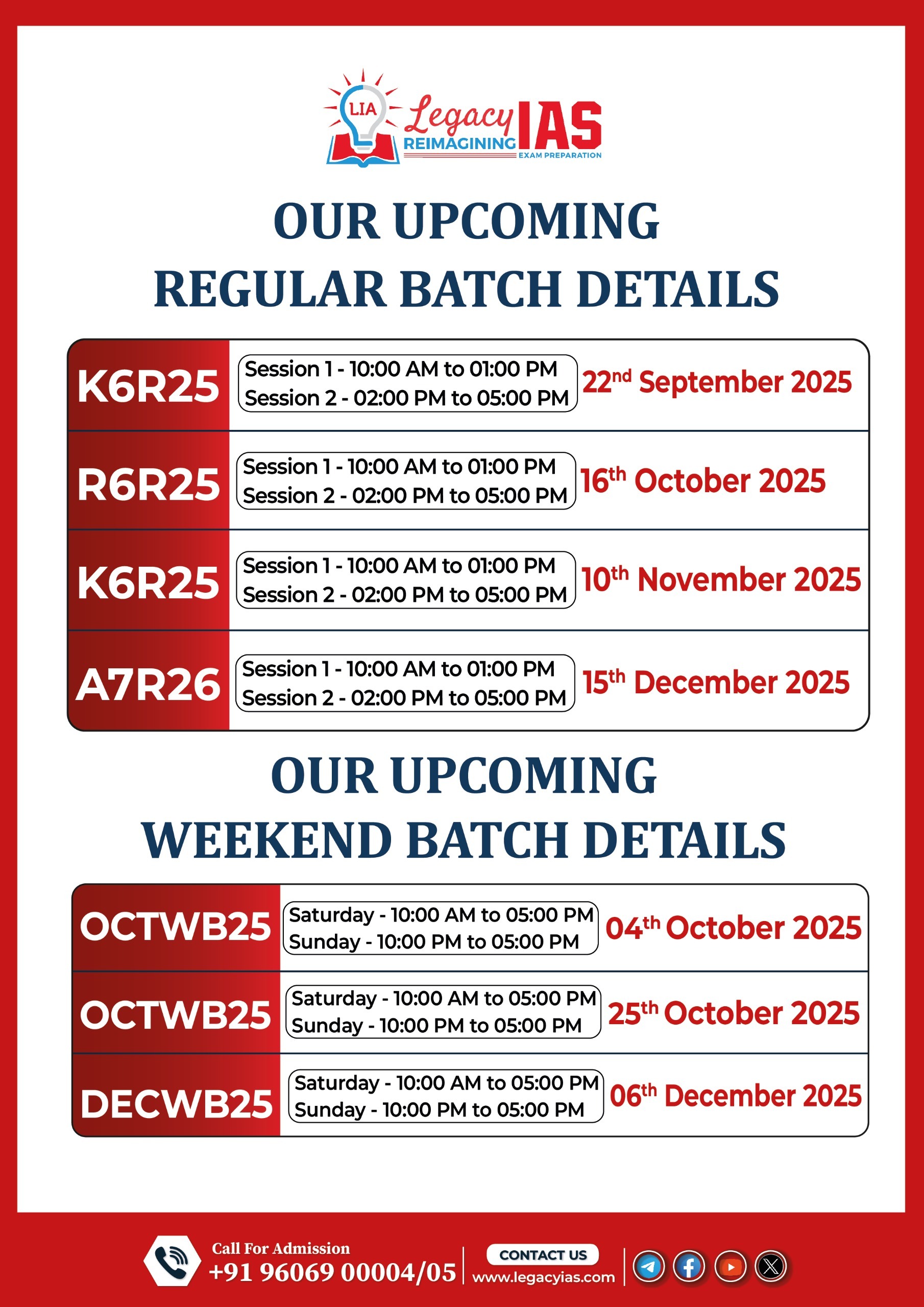Why in News?
- Article discussed the rise of functional foods and smart proteins as part of India’s evolving food ecosystem.
- The piece highlighted the need to shift focus from food security (calories) to nutritional security (balanced nourishment) amid persistent malnutrition and emerging “lab-grown” food technologies.
- It also reviewed the global regulatory progress and India’s policy preparedness to handle these food innovations.
Relevance:
GS 3 – Science & Technology, Food Security & Nutrition
• Nutrigenomics, bio-fortification, and bioprocessing innovations
• Transition from food security to nutritional security
• Smart protein ecosystem – plant-based, fermentation, cultivated meat
• Sustainable agriculture and circular bioeconomy
• Regulatory frameworks – FSSAI, biotechnology safety, and innovation policy
GS 2 – Governance & Health
• Nutritional policy and public health linkages (SDG 2, 3)
• Public–private partnerships and R&D ecosystem for food innovation
Functional Foods — Definition and Technologies
- Functional Foods: Foods enriched with additional nutrients or compounds that promote health and prevent disease.
- Examples:
- Vitamin-enriched rice, iron-fortified wheat, omega-3 fortified milk, probiotic curd, etc.
- Technologies Involved:
- Nutrigenomics: Studies how nutrients interact with genes to influence health outcomes.
- Biofortification: Conventional breeding/genetic techniques to increase micronutrient content (e.g., zinc rice, iron millet).
- 3D Food Printing: Enables nutrient-controlled and personalized food structures.
- Bioprocessing: Uses microbial fermentation to enhance food quality, safety, and digestibility.
Smart Proteins — Definition and Types
Smart Proteins: Protein alternatives developed through biotechnology to reduce dependence on animal-based meat and dairy.
Categories:
- Plant-based proteins: Extracts from legumes, cereals, or oilseeds restructured to mimic meat/dairy.
- Fermentation-derived proteins: Produced using microbes (precision fermentation) to create dairy proteins, egg whites, etc.
- Cultivated (cell-based) meat: Animal cells grown in bioreactors — no slaughter involved.
Why is Nutritional Security Essential for India?
- Persistent Malnutrition:
- NFHS-5 (2019–21):
- 35.5% of children under 5 are stunted.
- 32% are underweight.
- 57% of women aged 15–49 are anaemic.
- Protein Deficiency: Average Indian adult consumes ~50–55 g/day, below ICMR’s 60 g/day recommendation.
- NFHS-5 (2019–21):
- Urban–Rural Divide: Urban diets improving, rural India lags in protein and micronutrient intake.
- Policy Evolution Needed:
- India has achieved food grain self-sufficiency, but not nutritional adequacy.
- Shift needed from “calorie security” → “nutrition security” to meet SDG 2 (Zero Hunger) and SDG 3 (Good Health).
- Sustainability Factor:
- Agriculture contributes ~18% of India’s GHG emissions, largely from livestock.
- Smart proteins and functional foods can reduce carbon footprint while enhancing nutrition.
Global Scenario
| Country/Region | Initiative / Status |
| Singapore | First country to approve commercial sale of cultivated chicken (2020) by Eat Just. |
| China | Prioritised alternative proteins under national food security and innovation strategy. |
| European Union | Investing heavily through Farm to Fork Strategy — aims to cut conventional meat production and boost sustainable proteins. |
| United States | FDA approved lab-grown chicken (2023) for sale by UPSIDE Foods and Good Meat. |
Smart Protein Ecosystem — Global and Indian Context
- Global Market Projection:
- UBS (2023): $85 billion by 2030.
- Credit Suisse (2024): $240 billion by 2030.
- India’s Potential:
- Strong agricultural base + expanding biotech & food processing sectors.
- Early players: GoodDot, Blue Tribe Foods, Shaka Harry, Evo Foods.
- Backed by Good Food Institute India (GFI India) and CII Smart Protein Summit.
- Employment & Economic Opportunity:
- Potential to create thousands of jobs in agriculture, manufacturing, logistics, and biomanufacturing.
- Supports India’s Make-in-India and Bioeconomy Vision 2047 (target: $300 billion bioeconomy).
Challenges
- Policy & Regulation:
- Lack of clear definitions, safety standards, and labelling norms under FSSAI.
- Risk of mislabelled or unverified “functional” products flooding the market.
- Economic Barriers: High R&D cost, limited venture capital for biomanufacturing infrastructure.
- Workforce Mismatch: Need for upskilling farmers and technicians for biotech-driven food systems.
- Market Concentration: Fear of monopolisation by a few large corporations.
- Public Scepticism: “Lab-made” foods face emotional, ethical, and religious distrust.
Tackling Public Scepticism and Policy Path Ahead
Building Trust and Transparency
- Public education campaigns on safety, sustainability, and nutrition benefits.
- Involve consumer advocacy groups and scientific communicators.
Strong Regulatory Framework
- FSSAI to establish:
- Definitions for functional, smart, and novel foods.
- Rigorous safety assessment and labelling guidelines.
- Distinction between natural fortification and synthetic enhancement.
Inter-Ministerial Coordination
- Collaboration between MoHFW, FSSAI, DBT, ICAR, and MoFPI for coherent policy support.
Public–Private Partnerships
- Joint R&D, precision fermentation facilities, and biofoundry ecosystems.
- Funding through Startup India and BioNEST platforms.
Farmer Inclusion
- Integrate farmers into plant-protein supply chains (soy, pulses, millets).
- Promote biofortified crop cultivation for functional food inputs.
Way Forward
- Develop National Strategy on Functional & Smart Foods aligned with Nutrition Mission @2047.
- Launch BioNutrition Mission under DBT–FSSAI partnership.
- Focus on affordability, safety, and accessibility to avoid urban bias in “nutritional transformation.”
- Encourage biomanufacturing hubs in agricultural states for regional balance.
Conclusion
- Functional foods and smart proteins represent India’s next leap in the food–health–climate nexus.
- As India moves from food sufficiency to nutrition sufficiency, biotechnology will be central to achieving nutritional security, sustainability, and health equity.
- The real challenge lies in ensuring that this transition is scientifically sound, ethically transparent, socially inclusive, and environmentally sustainable.



